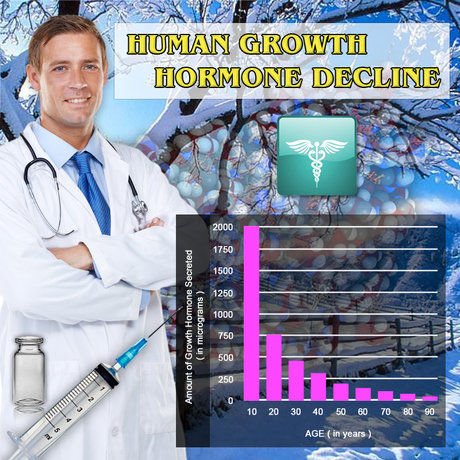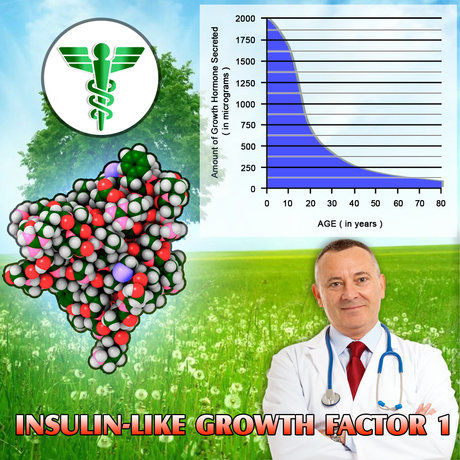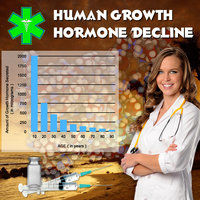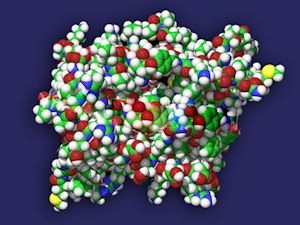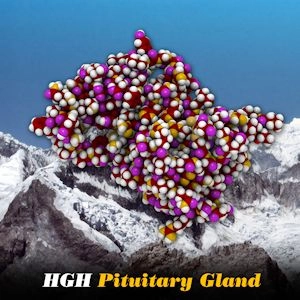Introduction
Bodybuilding, a sport and lifestyle that emphasizes muscle growth and physical aesthetics, has gained immense popularity among American males. While the pursuit of an ideal physique can be a healthy endeavor, it can also lead to psychological issues such as Body Dysmorphic Disorder (BDD). This article delves into the prevalence of BDD among American male bodybuilders, offering a comprehensive psychological assessment of this often-overlooked issue.
Understanding Body Dysmorphic Disorder
Body Dysmorphic Disorder is a mental health condition characterized by an obsessive focus on perceived flaws or defects in one's appearance. These perceived imperfections are often minor or nonexistent to others, but to those with BDD, they can cause significant distress and impairment in daily functioning. In the context of bodybuilding, BDD can manifest as an excessive preoccupation with muscle size, shape, or symmetry, leading to compulsive behaviors such as excessive exercise, strict dieting, and the use of performance-enhancing substances.
Prevalence Among American Male Bodybuilders
Recent studies have shed light on the alarming prevalence of BDD among American male bodybuilders. A survey conducted by the National Institute of Mental Health found that approximately 22% of male bodybuilders in the United States meet the diagnostic criteria for BDD. This rate is significantly higher than the general population, where BDD affects around 2.4% of individuals. The intense focus on physical appearance and the pressure to conform to idealized body standards within the bodybuilding community may contribute to this increased risk.
Psychological Assessment and Diagnostic Criteria
To accurately diagnose BDD in male bodybuilders, a comprehensive psychological assessment is crucial. Mental health professionals typically use the Diagnostic and Statistical Manual of Mental Disorders (DSM-5) criteria, which include:
1. **Preoccupation with perceived defects or flaws in physical appearance** that are not observable or appear slight to others.
2. **Repetitive behaviors** such as mirror checking, excessive grooming, or skin picking, or mental acts like comparing one's appearance with others.
3. **Clinically significant distress or impairment** in social, occupational, or other important areas of functioning due to the preoccupation.
In addition to meeting these criteria, bodybuilders with BDD often exhibit specific behaviors, such as spending excessive time in the gym, adhering to strict diets, or using anabolic steroids and other supplements to achieve their desired physique.
Impact on Mental Health and Well-being
The consequences of BDD in male bodybuilders extend beyond the gym. Individuals with this disorder may experience heightened levels of anxiety, depression, and social isolation. The constant pursuit of an unattainable body ideal can lead to a vicious cycle of dissatisfaction and self-criticism, further exacerbating mental health issues. Moreover, the use of performance-enhancing drugs to cope with BDD symptoms can lead to serious physical health risks, including heart disease, liver damage, and hormonal imbalances.
Treatment and Support
Addressing BDD in American male bodybuilders requires a multifaceted approach. Cognitive-behavioral therapy (CBT) has been shown to be effective in treating BDD by helping individuals challenge distorted beliefs about their appearance and develop healthier coping mechanisms. In some cases, medication such as selective serotonin reuptake inhibitors (SSRIs) may be prescribed to alleviate symptoms of anxiety and depression.
Support from the bodybuilding community and loved ones is also crucial. Encouraging a balanced approach to fitness, emphasizing overall health and well-being rather than solely focusing on aesthetics, can help mitigate the risk of BDD. Bodybuilding organizations and gyms can play a role by promoting body positivity and providing resources for mental health support.
Conclusion
The prevalence of Body Dysmorphic Disorder among American male bodybuilders is a concerning issue that warrants increased attention and understanding. By recognizing the signs of BDD and providing comprehensive psychological assessments and support, we can help individuals in the bodybuilding community achieve not only physical fitness but also mental well-being. It is essential for both the bodybuilding industry and mental health professionals to work together to address this hidden struggle and promote a healthier, more balanced approach to the pursuit of physical ideals.
Contact Us For A Fast And Professional Response

- Bodybuilding: A Strategic Health Solution for Obesity and Metabolic Syndrome in American Males [Last Updated On: February 23rd, 2025] [Originally Added On: February 23rd, 2025]
- Unveiling the Secrets of Longevity Through Body Building: A Geriatric Perspective [Last Updated On: February 23rd, 2025] [Originally Added On: February 23rd, 2025]
- Empowering the Mind Through Muscles: Leveraging Body Building For Mental Health Optimization [Last Updated On: March 2nd, 2025] [Originally Added On: March 2nd, 2025]
- Enhancing Bodybuilding Performance and Injury Prevention: The Critical Role of Physical Therapy [Last Updated On: March 3rd, 2025] [Originally Added On: March 3rd, 2025]
- Essential Nutritional Strategies for Effective Bodybuilding [Last Updated On: March 4th, 2025] [Originally Added On: March 4th, 2025]
- Optimizing Body Building: Enhancing Health and Performance through Training and Nutrition [Last Updated On: March 5th, 2025] [Originally Added On: March 5th, 2025]
- Bodybuilding's Role in Preventing Cardiovascular Disease in American Men [Last Updated On: March 6th, 2025] [Originally Added On: March 6th, 2025]
- Exploring the Synergy Between Bodybuilding and Diabetes Management in American Males [Last Updated On: March 7th, 2025] [Originally Added On: March 7th, 2025]
- Orthopedic Health Strategies for Bodybuilders: Prevent Injuries, Promote Recovery, Optimize Performance [Last Updated On: March 7th, 2025] [Originally Added On: March 7th, 2025]
- The Risks of Steroid Use in Bodybuilding: A Comprehensive Health Warning [Last Updated On: March 8th, 2025] [Originally Added On: March 8th, 2025]
- Optimizing Bodybuilding Through Hormonal Dynamics: A Comprehensive Guide for American Men [Last Updated On: March 9th, 2025] [Originally Added On: March 9th, 2025]
- Unveiling the Psychological Benefits of Bodybuilding for American Males [Last Updated On: March 12th, 2025] [Originally Added On: March 12th, 2025]
- The Impact of Bodybuilding on Sleep: Patterns and Quality in American Males [Last Updated On: March 13th, 2025] [Originally Added On: March 13th, 2025]
- Exploring Body Building as a Therapeutic Intervention for Chronic Pain in American Males [Last Updated On: March 15th, 2025] [Originally Added On: March 15th, 2025]
- Bodybuilding: A Strategic Approach to Managing Hypertension in American Males [Last Updated On: March 17th, 2025] [Originally Added On: March 17th, 2025]
- Preventing Injuries in Bodybuilding: Techniques, Recovery, and Professional Guidance [Last Updated On: March 17th, 2025] [Originally Added On: March 17th, 2025]
- Safe Body Building for American Males: Debunking Myths and Embracing Facts [Last Updated On: March 17th, 2025] [Originally Added On: March 17th, 2025]
- Optimizing Post-Surgical Recovery in American Males with Bodybuilding Techniques: A Physician's Guide [Last Updated On: March 18th, 2025] [Originally Added On: March 18th, 2025]
- Bodybuilding Boosts Immune Health: A Guide for American Men [Last Updated On: March 19th, 2025] [Originally Added On: March 19th, 2025]
- Bodybuilding's Impact on Male Endocrine Health: Hormonal Balance and Risks [Last Updated On: March 19th, 2025] [Originally Added On: March 19th, 2025]
- Body Building: A Therapeutic Approach to Stress and Anxiety in American Males [Last Updated On: March 20th, 2025] [Originally Added On: March 20th, 2025]
- Health Risks of Competitive Bodybuilding for American Males: A Comprehensive Overview [Last Updated On: March 20th, 2025] [Originally Added On: March 20th, 2025]
- Bodybuilding's Role in Addiction Recovery for American Males: Physical and Psychological Benefits [Last Updated On: March 20th, 2025] [Originally Added On: March 20th, 2025]
- Bodybuilding and Kidney Health: Safe Practices for American Males [Last Updated On: March 20th, 2025] [Originally Added On: March 20th, 2025]
- Bodybuilding as a Strategy to Combat Lifestyle Diseases in American Males [Last Updated On: March 21st, 2025] [Originally Added On: March 21st, 2025]
- Bodybuilding: A Holistic Approach to Health for American Males [Last Updated On: March 21st, 2025] [Originally Added On: March 21st, 2025]
- Orthostatic Hypotension Risks and Management for American Male Bodybuilders [Last Updated On: March 21st, 2025] [Originally Added On: March 21st, 2025]
- Body Building Enhances Gut Health in American Males: A Clinical Perspective [Last Updated On: March 21st, 2025] [Originally Added On: March 21st, 2025]
- Body Building Enhances Lung Health: Exercises, Breathing, and Nutrition for American Males [Last Updated On: March 22nd, 2025] [Originally Added On: March 22nd, 2025]
- Pediatric Bodybuilding: Balancing Growth, Development, and Fitness in Young Males [Last Updated On: March 22nd, 2025] [Originally Added On: March 22nd, 2025]
- Bodybuilding's Impact on Heart Health: Risks and Cardiologist Insights [Last Updated On: March 22nd, 2025] [Originally Added On: March 22nd, 2025]
- Bodybuilding's Impact on Prostate Health: Hormones, Supplements, and Diet [Last Updated On: March 22nd, 2025] [Originally Added On: March 22nd, 2025]
- Metabolic Effects of Bodybuilding: Insights for American Males [Last Updated On: March 23rd, 2025] [Originally Added On: March 23rd, 2025]
- Asthma and Bodybuilding: Safety, Benefits, and Tailored Strategies for American Males [Last Updated On: March 23rd, 2025] [Originally Added On: March 23rd, 2025]
- Debunking Menstrual Cycle Myths in Bodybuilding: A Scientific Perspective for American Males [Last Updated On: March 23rd, 2025] [Originally Added On: March 23rd, 2025]
- Sickle Cell Disease and Body Building: Benefits, Risks, and Safe Practices for American Males [Last Updated On: March 23rd, 2025] [Originally Added On: March 23rd, 2025]
- Body Building Benefits for American Males with Parkinson's Disease [Last Updated On: March 23rd, 2025] [Originally Added On: March 23rd, 2025]
- Body Building's Role in Managing Male Menopause: Enhancing Health and Vitality [Last Updated On: March 24th, 2025] [Originally Added On: March 24th, 2025]
- Bodybuilding Benefits for American Men with Rheumatoid Arthritis: A Tailored Approach [Last Updated On: March 24th, 2025] [Originally Added On: March 24th, 2025]
- Bodybuilding: A Strategic Approach to Prevent Musculoskeletal Disorders in American Males [Last Updated On: March 24th, 2025] [Originally Added On: March 24th, 2025]
- Bodybuilding's Role in Managing Chronic Degenerative Diseases for American Males [Last Updated On: March 24th, 2025] [Originally Added On: March 24th, 2025]
- Liquid Diets in Bodybuilding: Benefits, Risks, and Medical Insights [Last Updated On: March 25th, 2025] [Originally Added On: March 25th, 2025]
- Bodybuilding: A Therapeutic Approach to Mood Disorders in American Males [Last Updated On: March 25th, 2025] [Originally Added On: March 25th, 2025]
- Bodybuilding as a Therapeutic Strategy for Managing PTSD in American Males [Last Updated On: March 25th, 2025] [Originally Added On: March 25th, 2025]
- Bodybuilding Enhances Postnatal Recovery for New American Fathers: Physical and Psychological Benefits [Last Updated On: March 26th, 2025] [Originally Added On: March 26th, 2025]
- Bodybuilding's Psychological Impact on American Teenage Males: Benefits and Risks [Last Updated On: March 26th, 2025] [Originally Added On: March 26th, 2025]
- Bodybuilding and Dementia Risk: Insights for American Males [Last Updated On: March 26th, 2025] [Originally Added On: March 26th, 2025]
- Bodybuilding: A Proactive Approach to Combat Age-Related Muscle Loss in American Males [Last Updated On: March 26th, 2025] [Originally Added On: March 26th, 2025]
- Bodybuilding Reduces Colon Cancer Risk in American Males: A Comprehensive Guide [Last Updated On: March 26th, 2025] [Originally Added On: March 26th, 2025]
- Genetic Factors in Bodybuilding: Tailoring Training and Nutrition for American Males [Last Updated On: March 26th, 2025] [Originally Added On: March 26th, 2025]
- Essential Vitamins and Supplements for American Male Bodybuilders: A Medical Review [Last Updated On: March 27th, 2025] [Originally Added On: March 27th, 2025]
- Essential Safety Precautions for American Male Bodybuilders [Last Updated On: March 27th, 2025] [Originally Added On: March 27th, 2025]
- Bodybuilding Boosts Immune Health: A Comprehensive Guide for American Men [Last Updated On: March 27th, 2025] [Originally Added On: March 27th, 2025]
- Bodybuilding: A Natural Approach to Managing Arthritis in American Males [Last Updated On: March 27th, 2025] [Originally Added On: March 27th, 2025]
- Body Building Benefits for COPD Patients: Enhancing Health and Quality of Life [Last Updated On: March 27th, 2025] [Originally Added On: March 27th, 2025]
- Body Building: A Comprehensive Anti-Aging Strategy for American Males [Last Updated On: March 27th, 2025] [Originally Added On: March 27th, 2025]
- Bodybuilding Boosts Recovery for American Males Post-Chemotherapy [Last Updated On: March 27th, 2025] [Originally Added On: March 27th, 2025]
- Bodybuilding Boosts Mental Resilience in American Males: Discipline, Community, and Growth [Last Updated On: March 27th, 2025] [Originally Added On: March 27th, 2025]
- Bodybuilding Boosts Cognitive Health: Benefits for American Men [Last Updated On: March 28th, 2025] [Originally Added On: March 28th, 2025]
- Injury Prevention and Management Strategies for American Male Bodybuilders [Last Updated On: March 28th, 2025] [Originally Added On: March 28th, 2025]
- Bodybuilding Boosts Bone Density in American Males: Benefits and Balanced Approaches [Last Updated On: March 28th, 2025] [Originally Added On: March 28th, 2025]
- Body Building's Impact on Heart Health for American Males: Benefits and Risks [Last Updated On: March 29th, 2025] [Originally Added On: March 29th, 2025]
- Hydration Guidelines for American Male Bodybuilders: Enhancing Performance and Recovery [Last Updated On: March 30th, 2025] [Originally Added On: March 30th, 2025]
- Bodybuilding Boosts Metabolism: Muscle Mass, RMR, and Thermogenesis in American Males [Last Updated On: March 31st, 2025] [Originally Added On: March 31st, 2025]
- Bodybuilding's Dual Impact on Life Expectancy in American Males: Benefits and Risks [Last Updated On: April 1st, 2025] [Originally Added On: April 1st, 2025]
- Medically Supervised Body Building: A Safe Path to Weight Management for American Males [Last Updated On: April 1st, 2025] [Originally Added On: April 1st, 2025]
- Bodybuilding's Impact on Hormones in American Males: Benefits and Risks [Last Updated On: April 1st, 2025] [Originally Added On: April 1st, 2025]
- Bodybuilding Boosts Cardiovascular Health: A Comprehensive Guide for American Males [Last Updated On: April 5th, 2025] [Originally Added On: April 5th, 2025]
- Bodybuilding: A Non-Pharmacological Approach to Stress Management in American Males [Last Updated On: April 7th, 2025] [Originally Added On: April 7th, 2025]
- Stretching Essentials for American Male Bodybuilders: Enhancing Performance and Health [Last Updated On: April 7th, 2025] [Originally Added On: April 7th, 2025]
- Bodybuilding Enhances Recovery in American Males Post-Joint Replacement Surgery [Last Updated On: April 8th, 2025] [Originally Added On: April 8th, 2025]
- Gut Health's Crucial Role in Enhancing Bodybuilding Performance for American Males [Last Updated On: April 8th, 2025] [Originally Added On: April 8th, 2025]
- Bodybuilding and Flexibility: Enhancing Performance and Health for American Males [Last Updated On: April 9th, 2025] [Originally Added On: April 9th, 2025]
- Bodybuilding: A Holistic Approach to Managing ADHD in American Males [Last Updated On: April 11th, 2025] [Originally Added On: April 11th, 2025]
- Bodybuilding and Back Pain: Chiropractic Insights and Preventive Strategies [Last Updated On: April 12th, 2025] [Originally Added On: April 12th, 2025]
- Guidelines for Safe Bodybuilding During Pregnancy: A Support Guide for American Males [Last Updated On: April 12th, 2025] [Originally Added On: April 12th, 2025]
- Vegetarian Bodybuilding: Meeting Protein Needs for American Male Athletes [Last Updated On: April 12th, 2025] [Originally Added On: April 12th, 2025]
- Bodybuilding Regimen to Prevent Low Back Pain in American Males [Last Updated On: April 12th, 2025] [Originally Added On: April 12th, 2025]
- Overexertion Risks in Bodybuilding: Safe Training Strategies for American Males [Last Updated On: April 13th, 2025] [Originally Added On: April 13th, 2025]
- Bodybuilding as a Therapeutic Approach to Managing Sciatica in American Males [Last Updated On: April 13th, 2025] [Originally Added On: April 13th, 2025]

